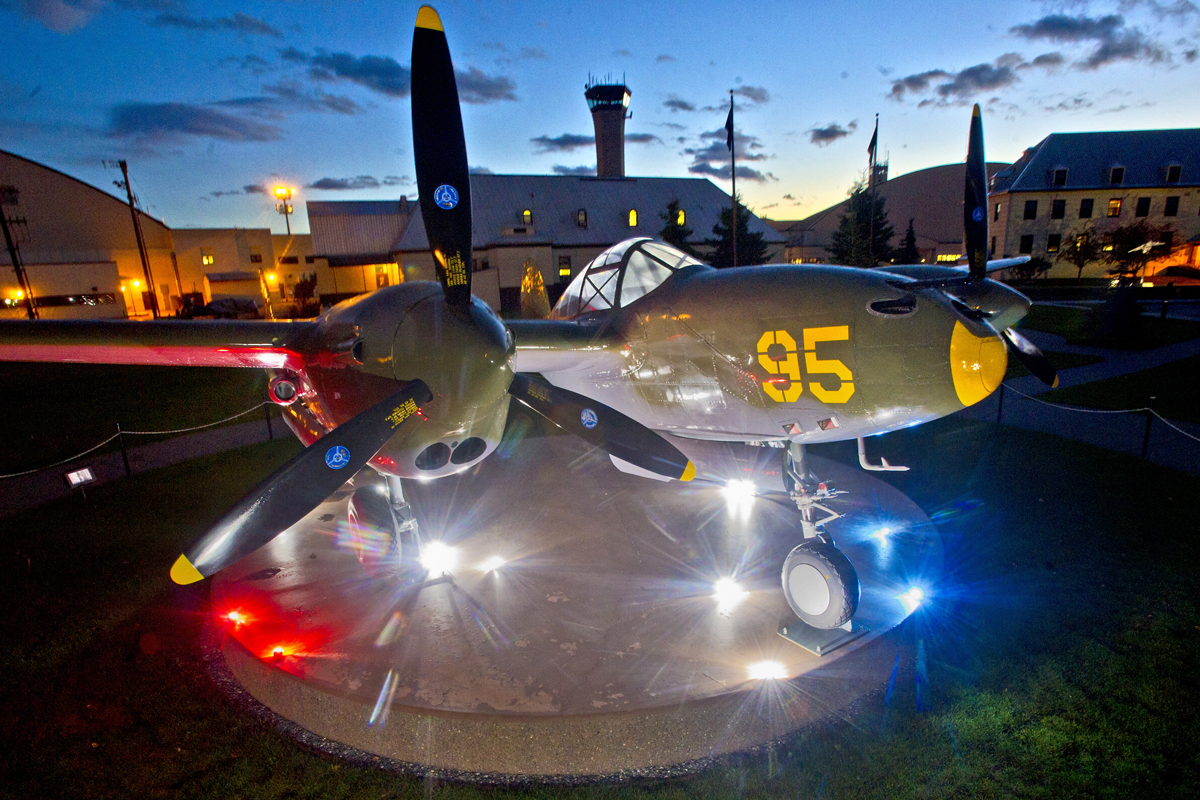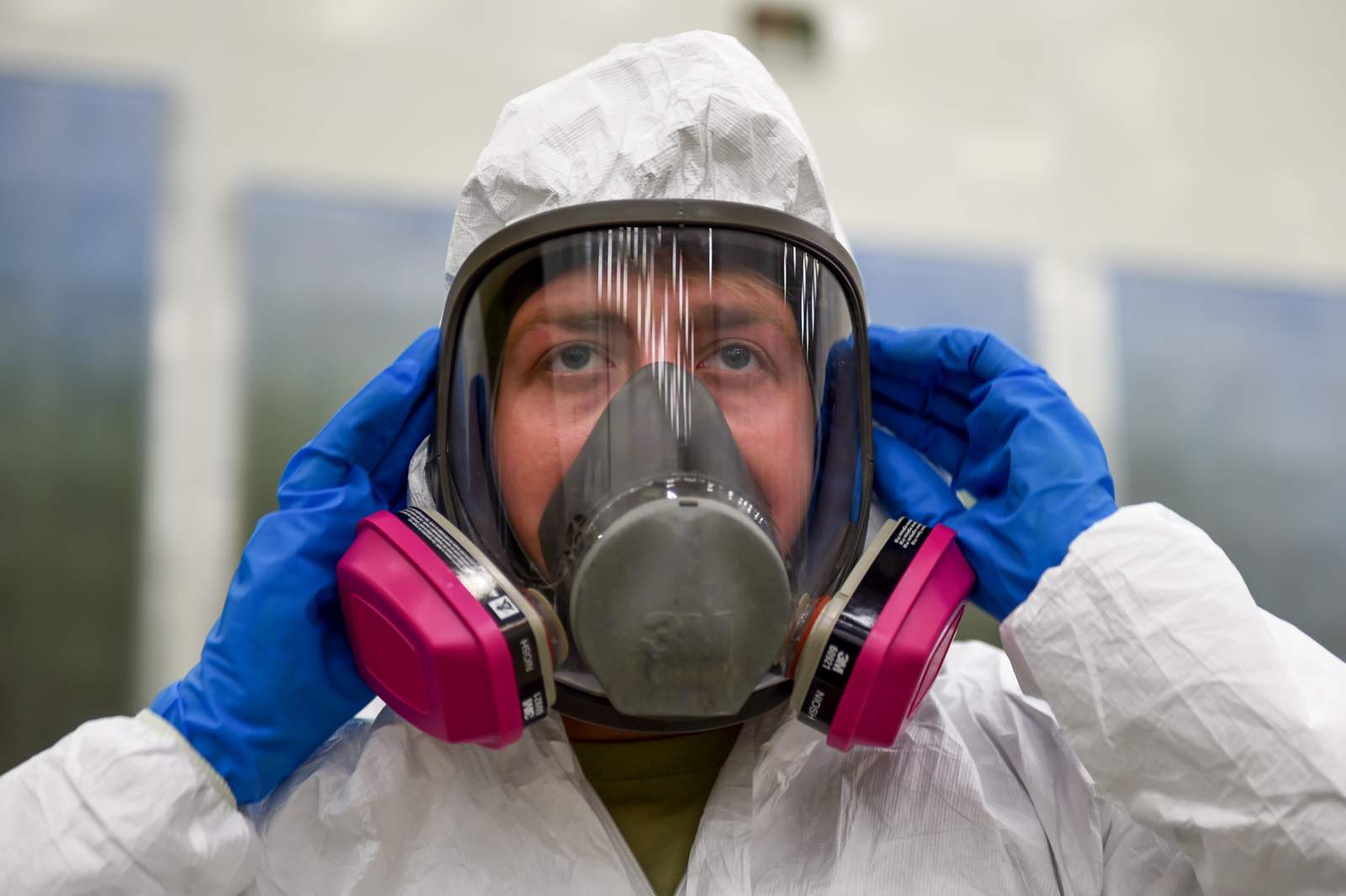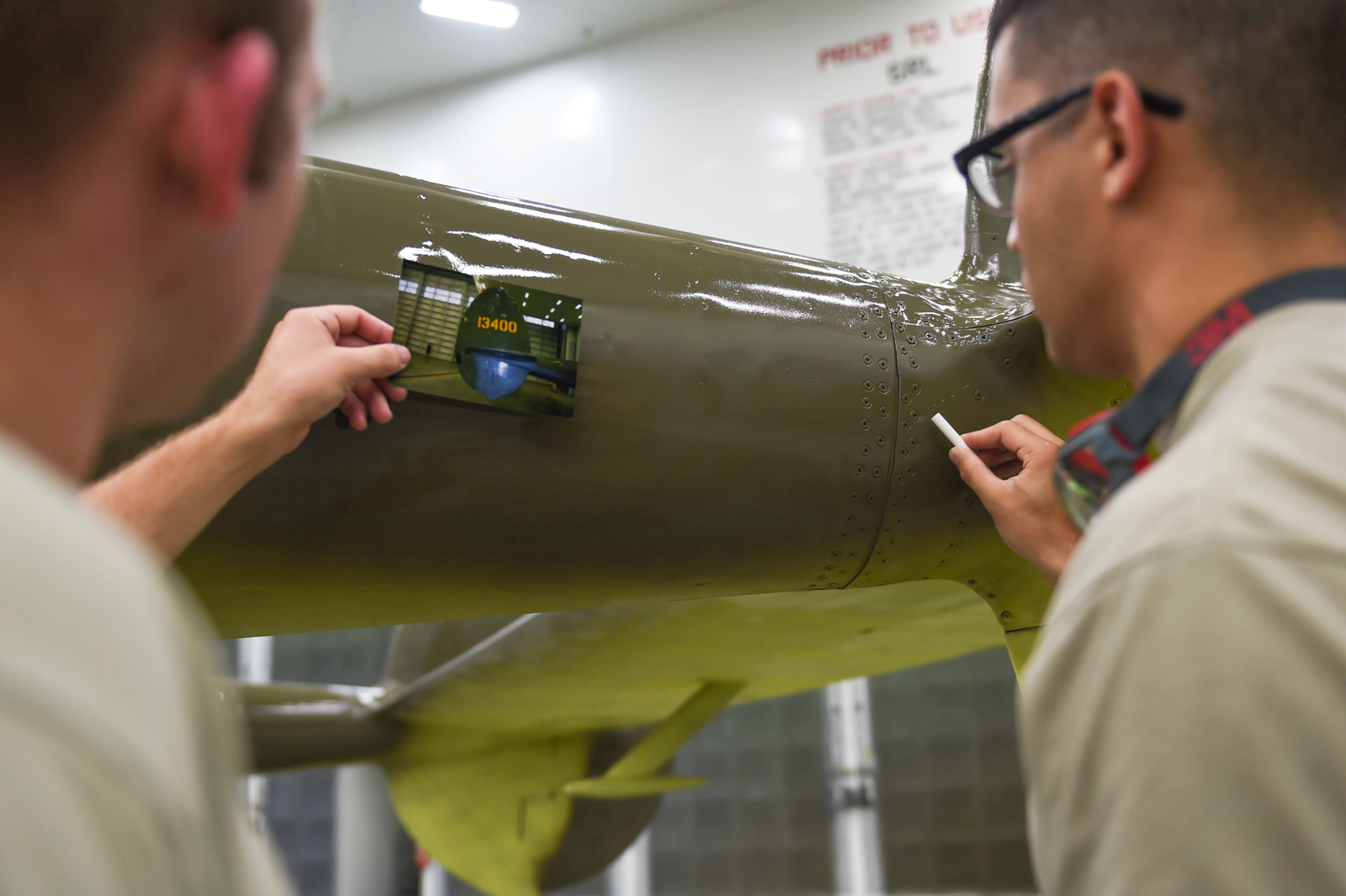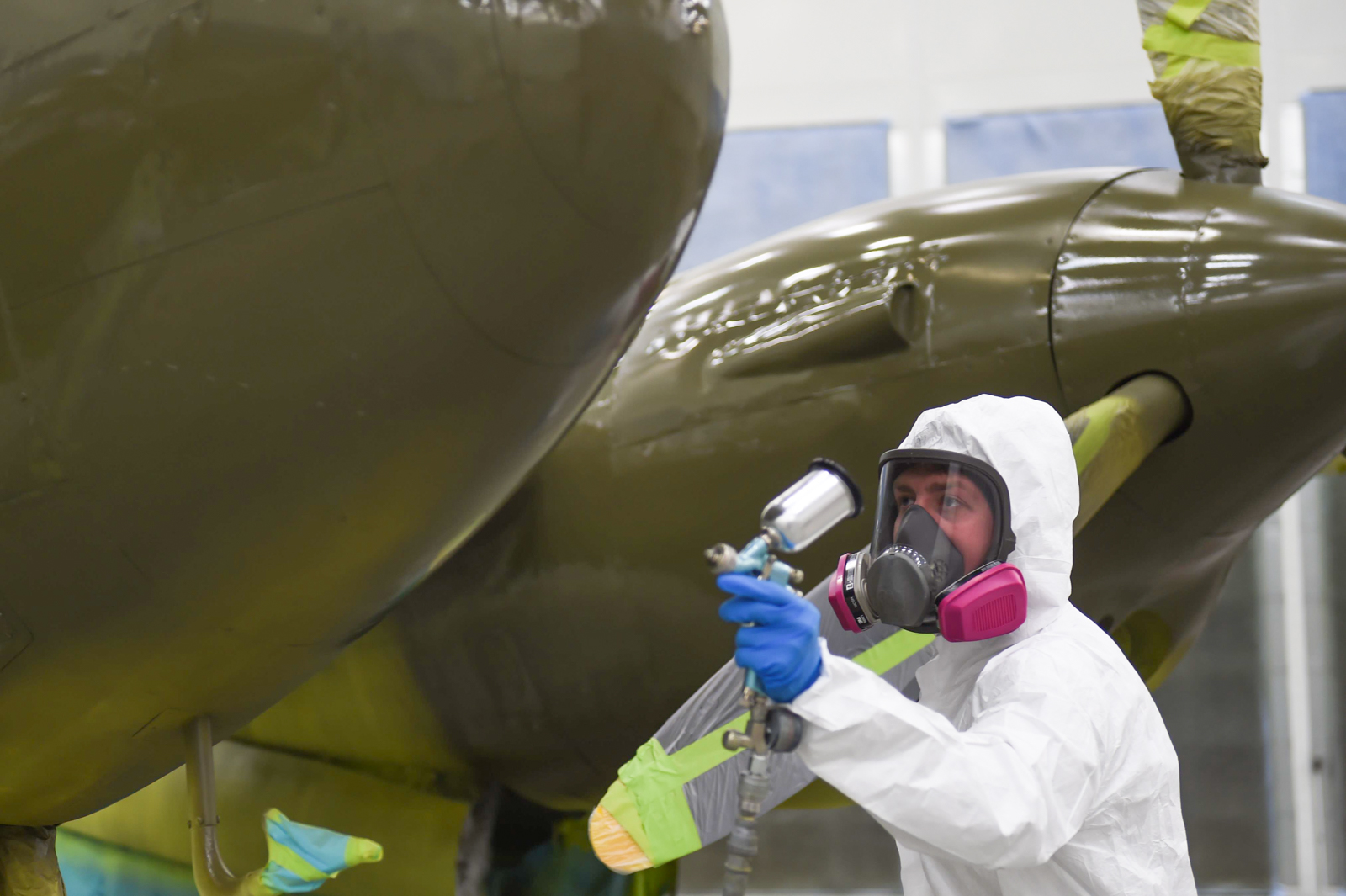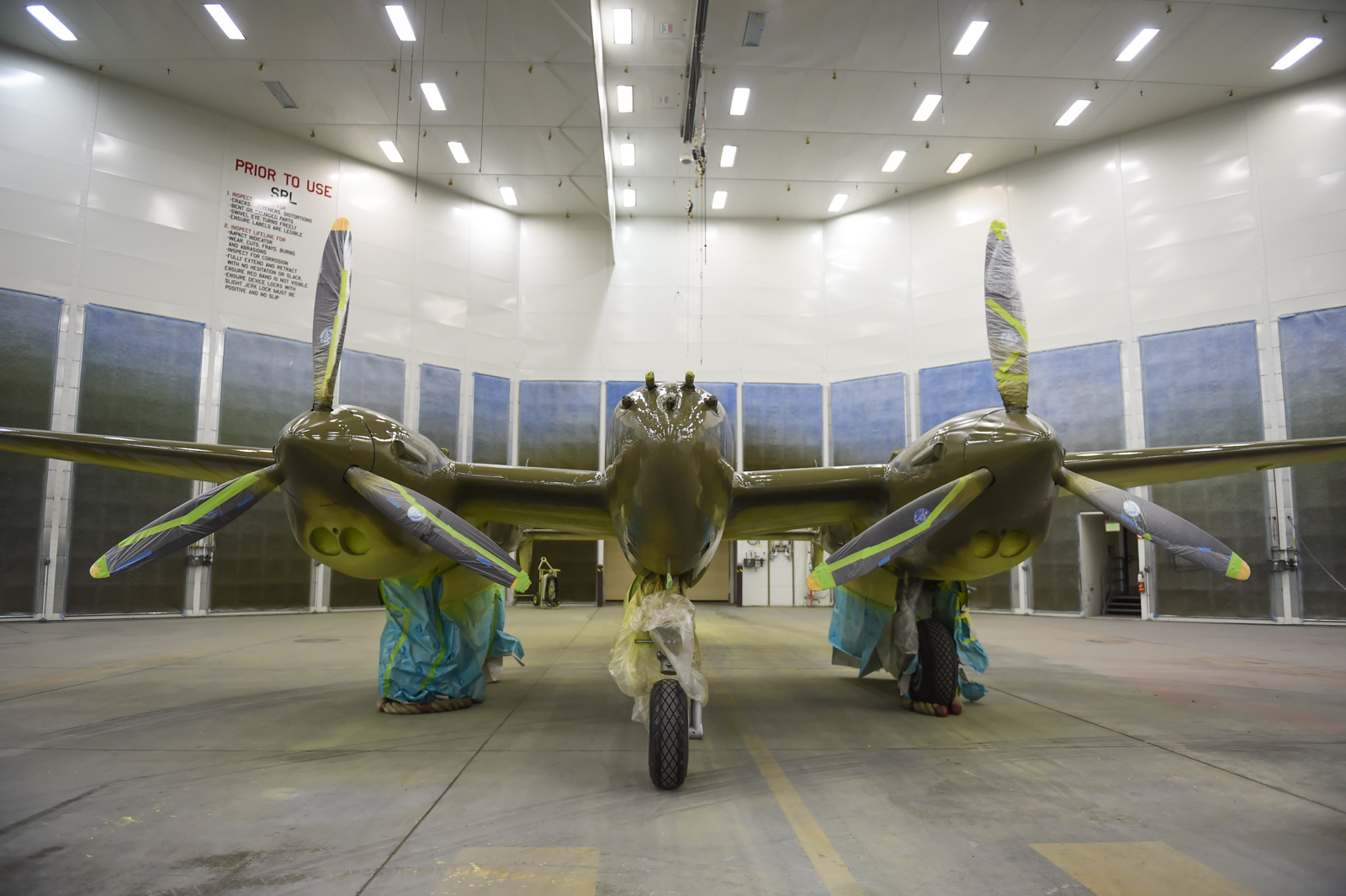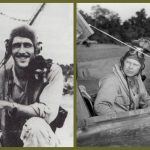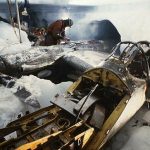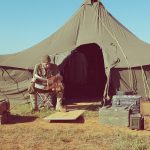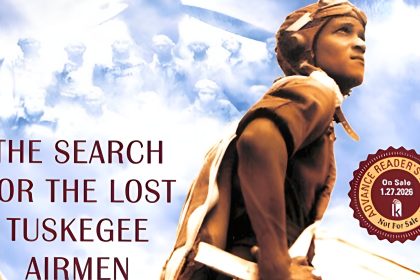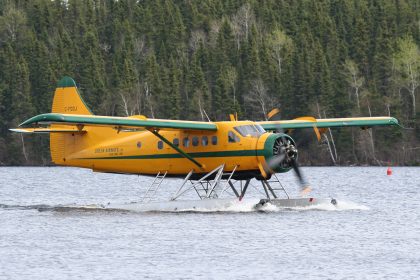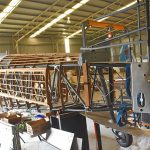The world’s last known complete Lockheed P-38G Lightning is currently under refurbishment at Elmendorf Air Force Base in Anchorage, Alaska. This aircraft served as 42-13400 in the U.S. Army Air Forces, and flew with the 54th Fighter Squadron from this very same airfield during WWII.
In early January, 1945 2nd Lt. Robert Nesmith was flying the fighter on a training mission over the Aleutian island chain. While he was flying home low over the Temnac Valley on the island of Attu, the left propellor began vibrating unnaturally. “I was getting — not serious — but a little fluctuation,” Nesmith said of the incident. “I had really pushed things down and it was real low.” He was down so low, in fact, that both propellers touched the icy ground. The aircraft skipped back up about a hundred feet before coming back down. The fighter skidded through the snow and ice before finally coming to rest. Nesmith was shaken, but unhurt, and was eventually rescued. A salvage team did come to inspect the downed aircraft, but given the remote location, they could do little more than salvage some of the undamaged components and abandon the airframe in place. And there the aircraft sat for the next five decades…
Back in the mid 1990s, there was an effort at Elmendorf AFB to find a P-38 to display in their air park. Given the aircraft’s rarity, and the relatively small budget available, they really only had two options available… find a wreck, or build a replica. Luckily, there were a few known wrecks in the Alaskan wilderness, but by the 1990s, it was much harder to get permission to recover them. As the U.S.Air Force article states…
The plane crashed in the Aleutian Islands which are property of the U.S. Fish and Wildlife Services, so the Air Force had to work with the agency to recover the plane.
The process of getting permission to have the last P-38G Lightning on Joint Base Elmendorf-Richardson was almost as difficult as restoring the one-of-a-kind aircraft’s outside appearance.
Capt. Steve Morrisette, a 54th Fighter Squadron pilot in 1998, contacted Don Delk and Ed Lamm, 3rd Wing civilian employees with a combined experience of 70 years, to head the team that actually went to the island and brought the plane back.
Lamm — considered the expert on structural repair — was responsible for restoring all the base static displays. Delk had the expertise of management and recovery of aircraft, and resources as the maintenance squadron officer. He had previously been part of recovery projects for crashed F-15 Eagles and the E-3 Sentry that crashed on Elmendorf in September 1995.
“(The P-38) was in sad shape,” Delk said. “Even though it had been beaten up pretty severely by the salvage crew and chopped up with crash axes to remove components and such, it had a good bit of corrosion, but not as much corrosion as we would expect being this close to the ocean. So for the number of years it laid out there, we thought it was in pretty fair shape.”
They worked in “The P-38 Shop” in Hangar Four in 1998. McCloud died that year, leaving many concerned that the project would die with him. Brig. Gen. Scott Gration, the 3rd Wing commander at the time, picked up the direction and supported the work.
“I estimate between the trip to Attu and the whole works, the recovery and restoration, we probably spent on the order of a couple hundred thousand dollars,” the restoration expert explained. “That is cheap, dirt cheap for this type of restoration; downtown probably would have taken me at least $500,000 and two or three years.”
The aircraft has occupied pride of place on a special pedestal at Elmendor’s air park since May, 2000. Of course, being outdoors is not an ideal situation, but the aircraft is well maintained. She came inside recently for a bit of TLC, which also included a trip through the paint booth to get a fresh coat of paint. We thought our readers would find these images interesting. Long may she continue to serve as a reminder for the sacrifice of so many in the “Forgotten War” of the Aleutian Island Chain… the only US home territory actually captured and occupied by the Japanese during WWII.
During the repaint, someone visited Elmendorf specifically to see the P-38, as their father had flown it during the war. One of the base personnel stated recently that, “The family member was visiting Alaska and wanted to visit the Heritage Park because the family member’s father flew the aircraft that was on display. They had a brother who had their father’s flight log and traced it back to [Elmendorf], and the tail number happened to match.”
Regardless of the unfinished aircraft, the ASM granted the family’s request to see the aircraft and pay tribute to their dad. Steinecke and Torres-Zaya said it’s also important for them to finish this project because they are putting a stamp on the only G model in existence; the Elmendorf plane is one of fewer than 30 P-38s remaining in the world. It is also one of only nine aircraft listed on the National Register of Historic Places. “It gives us the chance to be part of the bigger picture that everybody sees and not just the maintenance,” said Steinecke. “It’s not only us; it was a big team effort to get to this point close to the finish line.”
Steinecke and Torres-Zayas shared the same sentiments that when it comes to this aircraft, there is no room for error and that perfection is the key.







